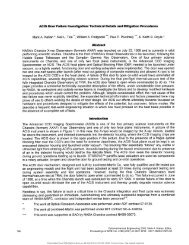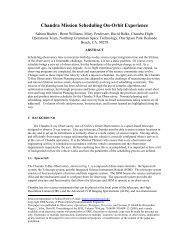observational overview of state transitions in x-ray binaries
observational overview of state transitions in x-ray binaries
observational overview of state transitions in x-ray binaries
Create successful ePaper yourself
Turn your PDF publications into a flip-book with our unique Google optimized e-Paper software.
RAPID X-RAY VARIABILITY<br />
0.1-100 Hz<br />
rms-drop<br />
Here I add an extra panel show<strong>in</strong>g the <strong>in</strong>tegrated rms variability between 0.1 and 100 Hz. As<br />
one can see, the strength <strong>of</strong> the variability changes rather smoothly from a few tens <strong>of</strong><br />
percent <strong>in</strong> the hard <strong>state</strong> down to a few percent <strong>in</strong> the s<strong>of</strong>t <strong>state</strong>. Both <strong>in</strong> the hard <strong>state</strong> and <strong>in</strong><br />
the s<strong>of</strong>t <strong>state</strong> the power spectra are rather featureless, with broad components dom<strong>in</strong>at<strong>in</strong>g<br />
the power spectra. Most <strong>of</strong> the <strong>in</strong>terest<strong>in</strong>g stuff occurs <strong>in</strong> between these two <strong>state</strong>s, and this<br />
is also where we see a rather mysterious drop <strong>in</strong> the rms variability, as po<strong>in</strong>ted out here. This<br />
drop <strong>in</strong> rms is related to a short and sudden changes <strong>in</strong> the power spectral properties, as I<br />
will show <strong>in</strong> the next slide.
















